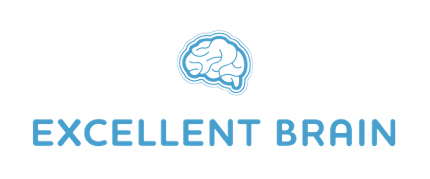Neuromarketing and EEG: Measuring Engagement in Advertising
Neuromarketing used to have a bit of a bad reputation. Some people in the scientific community scoffed at the idea of using EEG or other brain-imaging technologies to gather marketing data, and some consumers (who may have misunderstood the purpose of neuromarketing) found it creepy.
Neuromarketing isn’t junk science, nor is it a sinister mind-control mechanism designed to make you buy things you don’t want. It’s a relatively new way to use the same kind of biofeedback you could measure with a common consumer device to discover which types of advertising are effective and useful, and which types are intrusive and annoying.
Why Conduct Neuromarketing Research?
Brands with the budget to spend on big advertising campaigns want to be sure that their money isn’t being wasted. It’s possible to correlate certain advertising campaigns with an increase in revenue, but often difficult to tell what about the campaign was most effective or how it could be improved.
Focus groups are a common way to get a sense of the overall effectiveness of an ad, product, or other consumer experience. However, focus groups rely on self-reporting, which is often inaccurate and clouded by the participant’s own biases and ideas of what they should be experiencing.
Neuromarketing researchers believe that most consumers’ decisions are made in a split second, and many of those decisions are made subconsciously. They also believe that consumers’ decisions tend to be driven more by emotion than by a careful comparison of product benefits or differentiators. Rather, they act based on how a product or advertisement makes them feel.
How Neuromarketing Works
Getting a real sense of these emotions and how advertising captures consumers’ attention is a function of neuromarketing, and the data it generates is extremely valuable to forward-thinking brands. Research data is gathered by monitoring certain biometrics, including:
- Eye tracking—small cameras can track eye movement and focus, helping researchers understand which parts of an advertisement are most visually appealing to test subjects.
- Facial coding—test subjects’ facial expressions are analyzed to learn more about certain responses to a product or advertisement, including frustration, happiness, and more.
- Galvanic skin response and electrodermal activity—measures sweat gland excretions associated with physiological arousal, and electrodermal activity which is associated with high or low levels of excitement and engagement.
- Electroencephalography (EEG)—measures electrical activity in the brain which is associated with increased or reduced focus and / or excitement.
This data can be used alone or in various combinations to lend insight into how a product, advertisement, or other experience affects the emotional and physiological state of a test subject.
How EEG is Used in Neuromarketing
Some neuromarketing research is conducted using fMRI, which measures brain activity by detecting changes in blood flow in response to stimuli. While this technique yields very accurate data, it is challenging for the following reasons:
- It requires test subjects to lie completely still in a large MRI chamber, which can be uncomfortable and intimidating.
- Stimuli cannot be encountered in the same way the test subject would usually be exposed to it—you can’t take an MRI chamber into a retail store, for example.
- Testing enough subjects to collect a usable amount of data is both expensive and extremely time-consuming.
EEG biosensors, on the other hand, allow neuromarketing research to be conducted easily—and from anywhere. This technology enables researchers to measure consumer response in an appropriate environment, such as a movie theatre, bar, or retail store. Small biosensors can be placed comfortable on the head, allowing for accurate measurement of brain activity while giving the test subject full range of motion and ensuring their comfort.
Changes in the electrical activity of the brain can be interpreted to determine if a test subject is engaged with a piece of advertising, experiencing an emotional response, or simply not paying attention.
In a focus group, a consumer may say a 30 second commercial was effective at holding their attention. An EEG reading may reveal that the same consumer was very engaged for the first ten seconds of the commercial, lost interest for the next ten, and then paid attention again for the final third of the video. Improving the middle third of the video based on this feedback could help create an even more effective commercial.
Who Benefits From Neuromarketing?
Neuromarketing helps marketers create more effective and engaging advertisements. This not only benefits the brand, but also the audience—people are exposed to hundreds (if not thousands) of ads per day, so creating more informative, emotionally rewarding, and useful ads can enhance a customer’s experience with a product or brand long before they consider buying.
Device manufacturers can also benefit from neuromarketing, as researchers demand more mobile biosensor solutions which provide accurate, clean data without being intrusive or intimidating. And, as more brands become aware of the benefits of neuromarketing research, the demand will only increase.
With NeuroSky’s affordable MindWave EEG Headset, the opportunity to conduct valuable neuromarketing research has never been more accessible. If you’re ready to provide the next brilliant neuromarketing solution, we can help—click here to talk to a NeuroSky EEG expert today.

